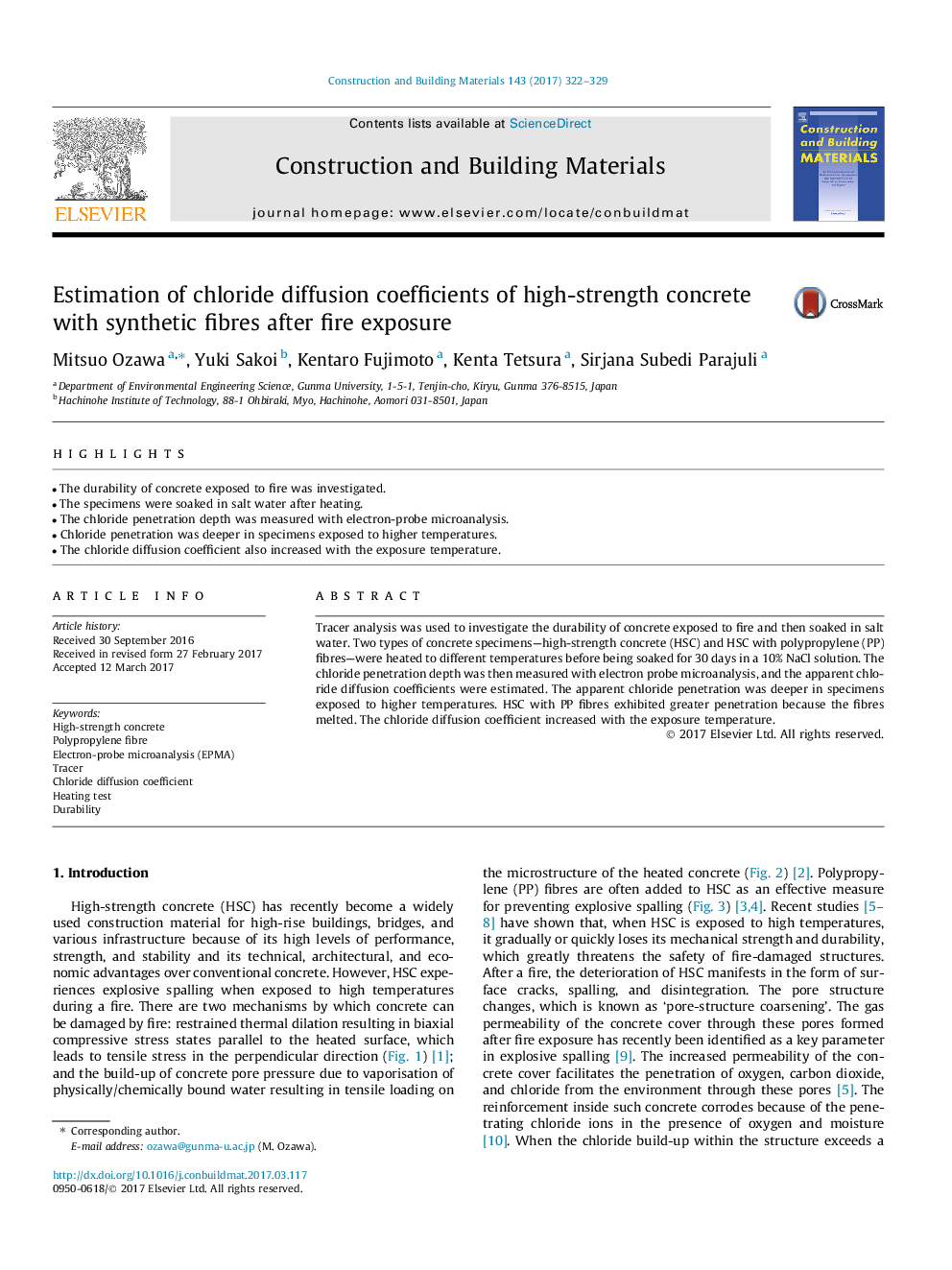| Article ID | Journal | Published Year | Pages | File Type |
|---|---|---|---|---|
| 4913243 | Construction and Building Materials | 2017 | 8 Pages |
Abstract
Tracer analysis was used to investigate the durability of concrete exposed to fire and then soaked in salt water. Two types of concrete specimens-high-strength concrete (HSC) and HSC with polypropylene (PP) fibres-were heated to different temperatures before being soaked for 30Â days in a 10% NaCl solution. The chloride penetration depth was then measured with electron probe microanalysis, and the apparent chloride diffusion coefficients were estimated. The apparent chloride penetration was deeper in specimens exposed to higher temperatures. HSC with PP fibres exhibited greater penetration because the fibres melted. The chloride diffusion coefficient increased with the exposure temperature.
Keywords
Related Topics
Physical Sciences and Engineering
Engineering
Civil and Structural Engineering
Authors
Mitsuo Ozawa, Yuki Sakoi, Kentaro Fujimoto, Kenta Tetsura, Sirjana Subedi Parajuli,
